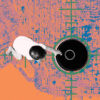UPDATE: A groundbreaking study released today reveals startling blood patterns on the Shroud of Turin, providing fresh insights into its connection to the crucifixion of Jesus Christ. This research, published in the journal Heritage, employs advanced bloodstain pattern analysis to explore the cloth long revered as Jesus’ burial shroud, igniting renewed global interest.
The study, led by a team of Italian scientists from the Institute of Crystallography, employs cutting-edge techniques to analyze the faint markings on the ancient linen. By simulating blood stains from real human blood, the researchers discovered patterns that align with biblical accounts of Christ’s suffering, indicating the cloth wrapped a body that underwent intense torture and crucifixion.
Key findings suggest that blood flow patterns on the shroud correspond to the positions described in the Gospels, pointing to a hasty burial before the Sabbath. This aligns with descriptions of Jesus’ treatment following his brutal execution, including scourging and the placement of a crown of thorns.
This study adds a significant chapter to the ongoing debate regarding the shroud’s authenticity. While some dismiss it as a medieval forgery, others hail it as a miraculous relic. Notably, the presence of creatinine and ferritin particles discovered in the bloodstains indicates severe physical trauma, reinforcing accounts found in non-canonical texts, such as the Gospel of the Hebrews.
The research also tackles the longstanding mystery of how the shroud’s image was formed. Scientists propose that bodily fluids combined with burial spices, such as myrrh and aloes, could account for the ethereal imprint, challenging previous assumptions made by earlier carbon-14 dating that dated the cloth to the Middle Ages. Recent X-ray analyses suggest the shroud is closer to 2,000 years old, aligning it with the first century A.D.
However, not all experts agree on the shroud’s origins. A provocative analysis highlighted by Faharas News argues that 3D modeling indicates the image may have been created over a bas-relief statue rather than a human body, suggesting a possible medieval artistic endeavor. This theory is echoed in AOL reports, which detail how computer simulations demonstrate differing patterns of folds on a three-dimensional figure versus a flat surface.
Despite these contrasting views, proponents of the shroud’s authenticity point to compelling evidence, including pollen traces from Jerusalem blooming in spring, coinciding with Passover. Findings shared on social media platforms like X bolster claims that the shroud may indeed be linked to the events of Jesus’ resurrection.
The implications of this study extend beyond scientific inquiry; they touch on deeply held beliefs about faith and spirituality. As detailed in reports from Daily Mail, the study illuminates possible burial rituals aligning with descriptions in ancient texts, suggesting a hurried yet reverent burial process.
Looking ahead, experts anticipate advancements in imaging technologies may further unveil secrets of the shroud without causing damage to the artifact. A report from Fox News highlights the potential for scientific validation to bridge gaps between faith and empiricism, although skeptics caution against overreliance on any single study.
This latest investigation not only sheds light on a potential first-century burial but also invites contemplation on how modern science intersects with the enduring mysteries of history. As discussions continue in real time across various media platforms, the Shroud of Turin remains a focal point of both scientific and spiritual exploration, prompting calls for further non-invasive testing to preserve its integrity.






































































